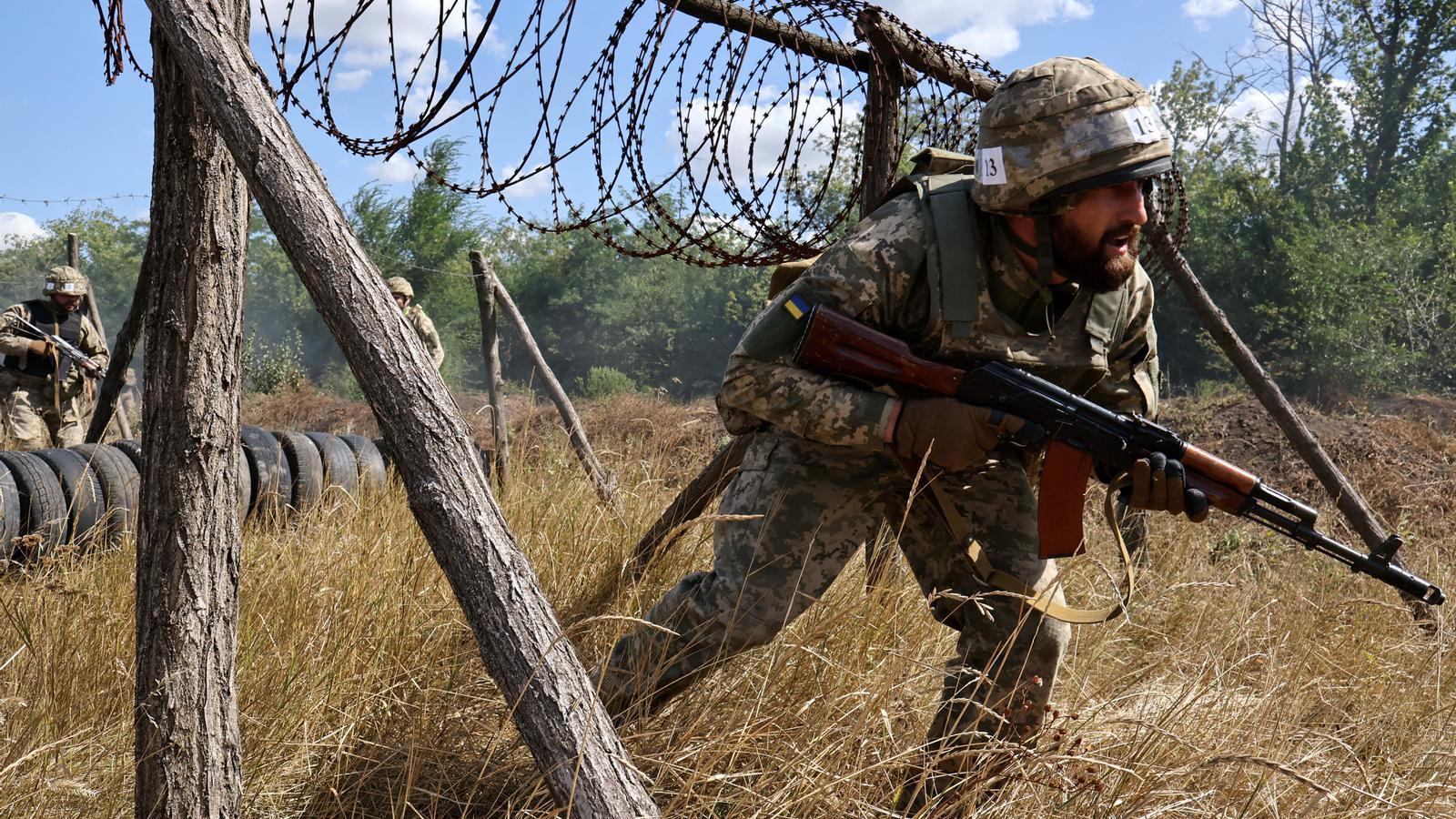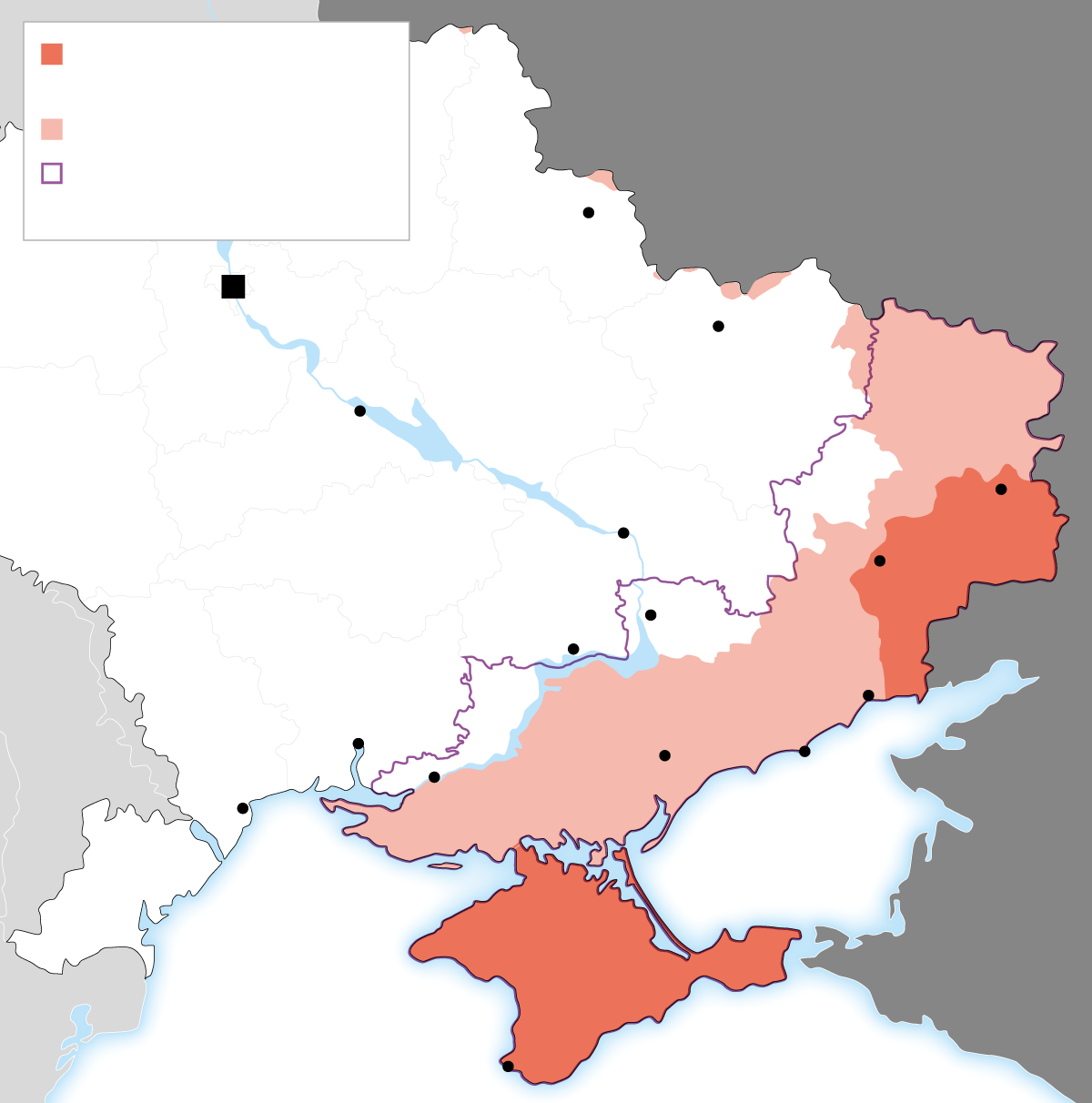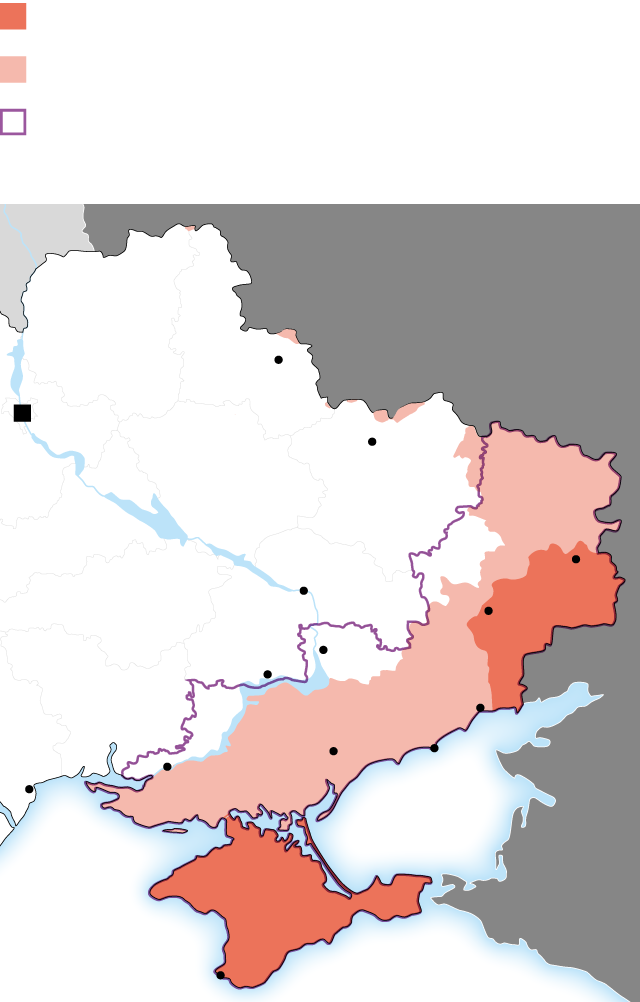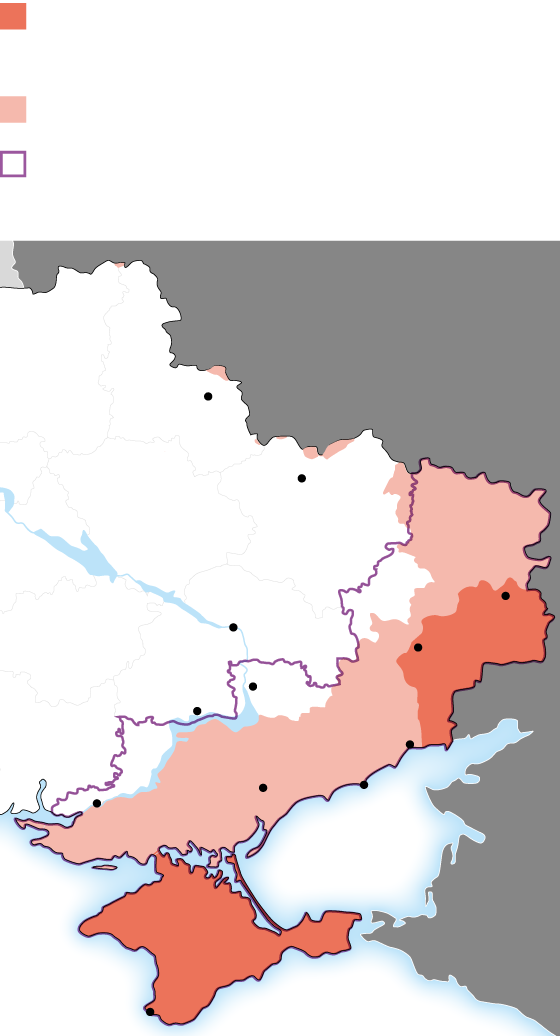What territory does Russia occupy in Ukraine?
Moscow controls almost 114,500 km2 of Ukraine, 19% of the country, and focuses its advances on the Donbas.


BarcelonaTerritorial concessions will be on the table at this Friday's meeting between Donald Trump and Vladimir Putin. In fact, although The US leader assured this Wednesday that any border changes will have Kiev's approval.The meeting could lead to a trading of trading cards in some regions of eastern Ukraine. But what's the state of the front right now? What Ukrainian territory does Moscow occupy?
Russia controls almost 114,500 km2 from Ukraine, more than all of Hungary (93,000). This area represents 19% of the country. The figure includes both areas occupied before the full-scale invasion in 2022 and those conquered afterward. In contrast, Ukraine—which led an incursion into Russia's Kursk region last August—no longer controls any internationally recognized Russian territory.
Moscow considers Crimea, Donetsk, Luhansk, Zaporizhia, and Kherson to be part of Russia since October 2022, although Kiev has repeatedly stated that it will never recognize Russia's occupation of their territories.
Crimea and Donbas, the precedent
Russian forces seized control of the Crimean Peninsula in the Black Sea in 2014. After a controversial referendum on annexation, Moscow absorbed the region. While Ukraine maintains that the peninsula remains its property, senior officials privately admit that it would be difficult to regain effective control.
The situation in Donbas is different. In 2014, separatists in Donetsk and Luhansk declared themselves independent "people's republics." However, Putin did not recognize them until 2022, just days before the invasion of Ukraine. In Donbas, Russia controls some 46,570 km².2 of the territory, that is, 88% of the region. This includes all of Luhansk and 75% of Donetsk. It is precisely on the Donetsk front that Moscow has been intensifying its offensive in recent weeks.
Putin's troops began occupying Zaporizhia and Kherson in February 2022, and currently control 74% of the area of the two regions, that is, approximately 41,176 km2, while Ukraine only controls about 14,500 km2In Zaporizhia, Russia controls mainly the southern half; in Kherson, only the eastern bank of the Dnieper. These two oblasts could be among the reefs Putin will highlight during his meeting with Trump, as in 2024 he stated his willingness to accept peace if Ukraine withdrew from these regions and officially renounced its aspirations to join NATO.
These are the regions Russia has annexed so far. But Moscow has also made military advances in other areas of the border. Specifically, it controls some points in the Kharkiv and Sumi regions, nearly 400 km.2 in total, and a small range in the southeastern corner of Mikolaiv. In Sumi, Russia claims it is creating a security zone to protect its Kursk region from attacks from Ukraine.
A sudden movement
On Tuesday, just three days before the meeting with Trump, Putin's troops launched an offensive near the mining town of Dobropilia in Donetsk, west of Russia's usual lines of advance. This is one of the most notable moves of the last year and has been interpreted by some analysts as an attempt to increase pressure on Kiev to cede territory.
According to the DeepState map, compiled with Ukrainian military sources, Russian forces had advanced at least 10 km northward in two stages on Tuesday, in a further step toward trying to fully control the Donetsk region of Ukraine. The advances are significant because they give Russian troops access to the strategic towns of Kostiantinivka and Pokrovsk, which Moscow wants to encircle, taking advantage of the opposing side's lack of troops.
While the Ukrainian military is currently speaking only of an "infiltration," analysts at the Institute for the Study of War say Moscow's troops are likely to seek to turn these tactical gains into a breakthrough in the coming days. It remains to be seen whether Russian troops will be able to hold their positions against a Kiev counteroffensive.



